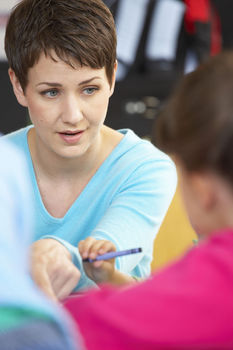Handling Autistic Violence in the Classroom
Aggression such as biting and pinching are quite problematic behaviors often seen among children with autism 
The first step to stopping aggressive behaviors is to investigate under what circumstances a child becomes aggressive. Biting and pinching in classrooms are often related to the child’s attempt to escape from academic or social demands. Another common reason children are aggressive is that they have been denied access to something they really want to have.
Once it is known why a child is biting or pinching or is otherwise aggressive, then it is important to never allow the child to have what he or she wants after they have been aggressive, whether that is to escape work or social demands, to get access to something they want, or to get teacher or another’s attention.
It is best to develop ways to prevent aggressive behaviors, especially when the aggression is motivated by the child’s wish to escape demands. In a classroom, some ideas include decreasing the amount of time a child is expected to work, scheduling more-preferred activities to occur after less-preferred activities, modifying the difficulty of the work, and/or teaching more fundamental prerequisite skills. It is also important to provide rewards for more appropriate behaviors that will obtain the same goal, such as asking for a break from work instead of pinching.
These behaviors can be very dangerous and limiting to the child’s academic and social adjustment. Any behavior plan needs to be highly individualized, carefully considered, closely monitored, and periodically modified by a specialist in behavior intervention. Classroom teachers should explore consultation from behavior intervention specialists within the school and county special education systems.
For more information:
Go to the Autism health topic.